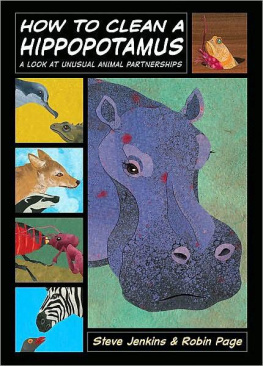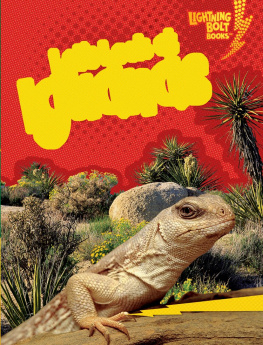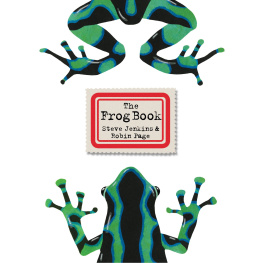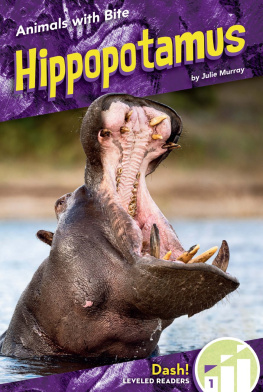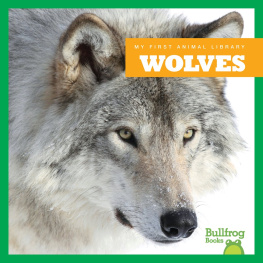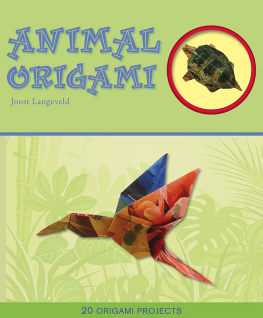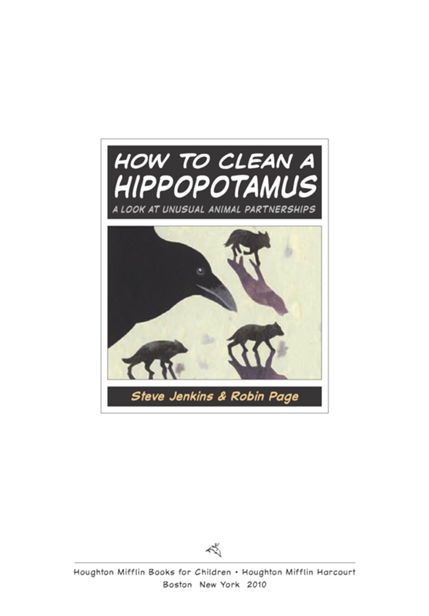
HOW TO CLEAN A
HIPPOPOTAMUS
A LOOK AT UNUSUAL ANIMAL PARTNERSHIPS
Steve Jenkins & Robin Page
Houghton Mifflin Books for Children * Houghton Mifflin Harcourt
Boston New York 2010
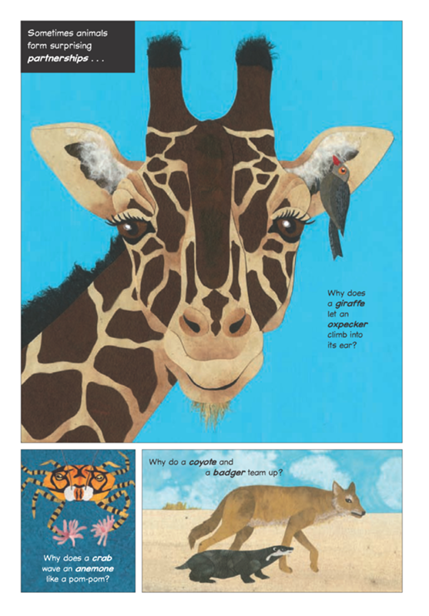
Sometimes animals form surprising
partnerships ...
Why does a giraffe let an oxpecker climb into its ear?
Why does a crab wave an anemone like a pom-pom?
Why do a coyote and a badger team up?
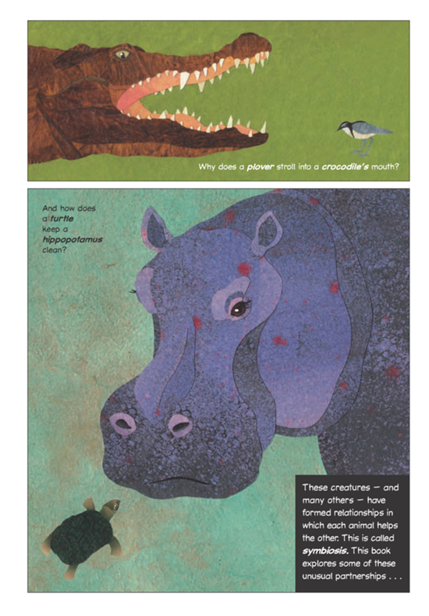
Why does a plover stroll into a crocodile's mouth?
And how does a turtle keep a hippopotamus clean?
These creatures--and many others--have formed relationships in which each animal helps the other. This is called symbiosis. This book explores some of these unusual partnerships ...

LOOK, LISTEN, AND SNIFF.
On the African savannah, grazing animals must lower their heads to eat, which can make it easier for a predator to sneak up on them.
Three different animals have found that feeding together makes them safer: each detects danger in a different way.
The zebra has excellent hearing. It stays alert for the sound of danger.
The wildebeest has an acute sense of smell. If the wind is blowing the right way, it can sniff out a nearby predator.
The ostrich, the tallest of the three, has sharp vision. It frequently lifts its head and looks around.
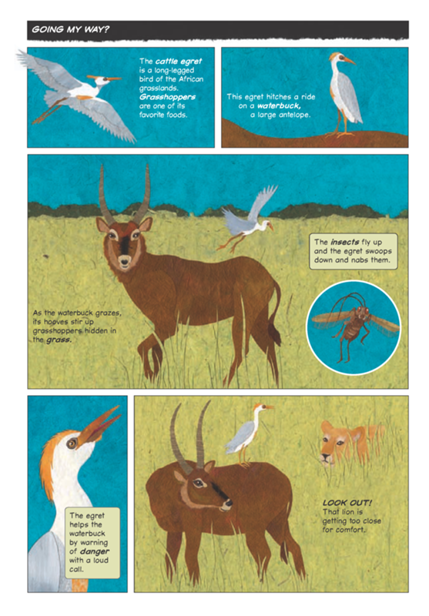
GOING MY WAY?
The cattle egret is a long-legged bird of the African grasslands. Grasshoppers are one of its favorite foods.
This egret hitches a ride on a
waterbuck, a large antelope.
As the waterbuck grazes, its hooves stir up grasshoppers hidden in the grass.
The insects fly up and the egret swoops down and nabs them.
The egret helps the waterbuck by warning of danger with a loud call.
LOOK OUT! That lion is getting too close for comfort.
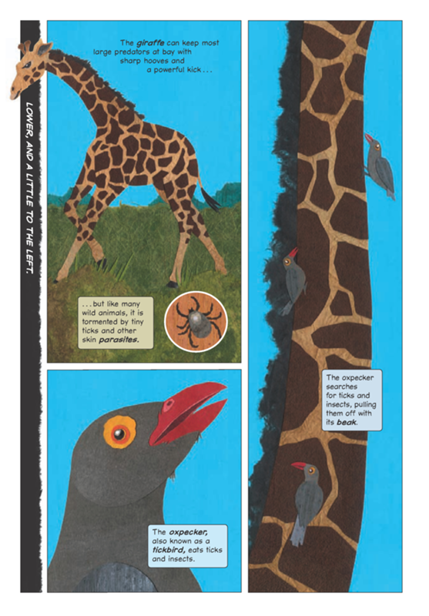
The giraffe can keep most large predators at bay with sharp hooves and a powerful kick ...
LOWER, AND A LITTLE TO THE LEFT.
... but like many wild animals, it is tormented by tiny ticks and other skin parasites.
The oxpecker, also known as a tickbird, eats ticks and insects.
The oxpecker searches for ticks and insects, pulling them off with its beak.
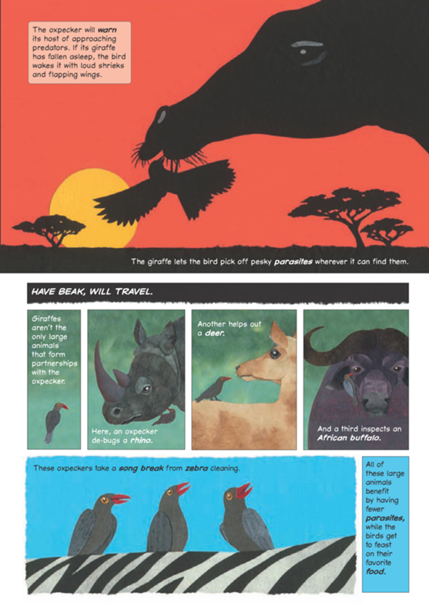
The oxpecker will warn its host of approaching predators. If its giraffe has fallen asleep, the bird wakes it with loud shrieks and flapping wings.
The giraffe lets the bird pick off pesky
parasites wherever it can find them.
HAVE BEAK, WILL TRAVEL.
Giraffes aren't the only large animals that form partnerships with the oxpecker.
Here, an oxpecker de-bugs a rhino.
Another helps out a deer.
And a third inspects an African buffalo.
These oxpeckers take a song break from zebra cleaning.
All of these large animals benefit by having fewer parasites, while the birds get to feast on their favorite food.
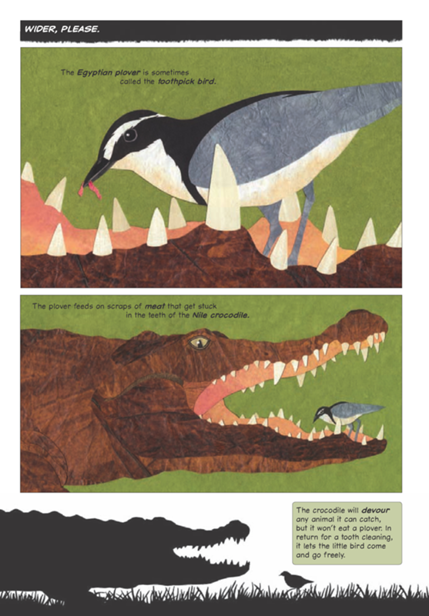
WIDER, PLEASE.
The Egyptian plover is sometimes called the toothpick bird.
The plover feeds on scraps of meat that get stuck in the teeth of the Nile crocodile.
The crocodile will devour any animal it can catch, but it won't eat a plover. In return for a tooth cleaning, it lets the little bird come and go freely.
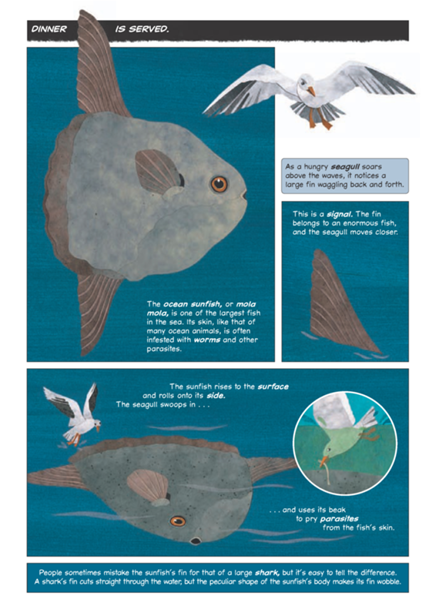
DINNER IS SERVED.
The ocean sunfish, or mola mola, is one of the largest fish in the sea. Its skin, like that of many ocean animals, is often infested with worms and other parasites.
As a hungry seagull soars above the waves, it notices a large fin waggling back and forth.
This is a signal. The fin belongs to an enormous fish, and the seagull moves closer.
The sunfish rises to the surface and rolls onto its side. The seagull swoops in ...
... and uses its beak to pry parasites from the fish's skin.
People sometimes mistake the sunfish's fin for that of a large shark, but it's easy to tell the difference. A shark's fin cuts straight through the water, but the peculiar shape of the sunfish's body makes its fin wobble.
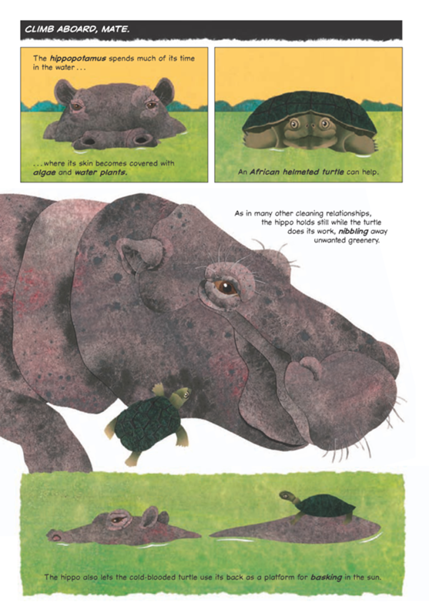
CLIMB ABOARD, MATE.
The hippopotamus spends much of its time in the water ...
... where its skin becomes covered with algae and water plants.
An African helmeted turtle can help.
As in many other cleaning relationships, the hippo holds still while the turtle does its work, nibbling away unwanted greenery.
The hippo also lets the cold-blooded turtle use its back as a platform for basking in the sun.
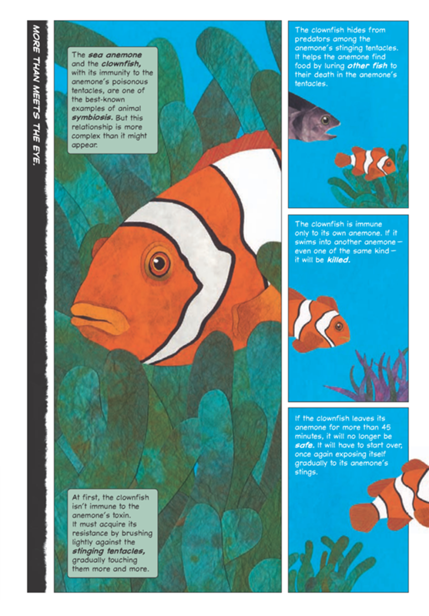
MORE THAN MEETS THE EYE.
The sea anemone and the clownfish, with its immunity to the anemone's poisonous tentacles, are one of the best-known examples of animal symbiosis. But this relationship is more complex than it might appear.
At first, the clownfish isn't immune to the anemone's toxin. It must acquire its resistance by brushing lightly against the
Next page
